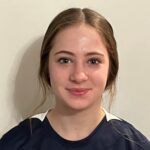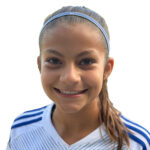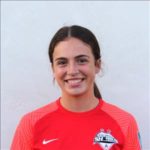No Pain, No Game? How to listen to your body when “new-season soreness” hits
 Let’s face it, working out hard can hurt. Especially at the beginning of the season or the start of a new training program.
Let’s face it, working out hard can hurt. Especially at the beginning of the season or the start of a new training program.
While no pain, no gain, is never my mantra, discomfort generally comes with the package. Soreness means the body is doing something new and/or doing more of it than it’s used to. That’s how training happens.
The question is: How do we know what pain to welcome and what pain to avoid?
The discomfort that usually accompanies a new workout regimen is called “delayed onset muscle soreness” or DOMS, for short, because it gradually increases from 24-48 hours after activity. It’s the result of micro-tears to the muscle fibers that occur as part of normal, high-intensity training. Bodies respond to the physical onslaught by trying to repair the damage done. With proper time to rest and recover, the body adapts and is ready to go again.
+READ: LeBolt: Five ways to ruin preseason soccer training
But in today’s go-hard-or-go-home youth sports environment, rest is not always in ready supply. Kids are trying to make the varsity team, trying to keep their starting spot, or trying to show well for club and school all in the same weekend. They are not gonna let a little pain stop ‘em.
This is where we have to be smart. Toughing it out with grit and determination may show resilience, but muscling through is not always the best strategy. Especially when there’s pain. Here are some questions to ask:
- What is the nature of the pain? How does it feel? Sharp? Dull? Burning? Aching?
- What is the severity of the pain? On a scale from mild to excruciating…(1-10)
- Where is it located? Point to it. Can you put your finger on it? Draw a circle around it?
- When did it start? How long have you had it? Is it showing any improvement?
- Does it come and go? Sustained? Go away with warm-up? Enhance during training?
- Is it pain you’ve felt before?

It’s beyond my pay grade to diagnose injury based on an athlete’s answers to these questions. Sudden (rather than delayed onset) pain is always concerning. Significant pain that doesn’t show improvement after rest over a few days to a week, should be checked out by a medical professional. Knowing the answers to the questions above will help with the diagnosis.
Here’s a no-brainer: Follow your doctor’s advice. I’m aware of a tremendous number of kids who go against doctors orders and even parents who beg the doctors to clear their kids to play, even when it isn’t wise.
Pushing through significant pain may increase the severity of the initial injury. And almost certainly, the body’s compensation for the weak or injured body part will put other joints, muscles or tissues at increased risk.
Keep in mind that even if the discomfort is only of the DOMS variety, it’s still pain and it’s still real. Hobbling, aching kids can’t train well. We need to be watching for how our kids are moving in training and game play and help them be as good at recovering as they are at every other part of their training.
To decrease the impact of delayed onset muscle soreness with your players try these five strategies:
- Perform a 5-10 cool down after every training session and competition. Gentle movement after training increases blood flow, oxygen and healing nutrients to areas with micro-trauma.
- Stretch after training. Tight, warmed muscles respond well to stretching for recovery with enhanced range of motion and flexibility.
- Self-massage or foam rolling flushes areas of micro-trauma. This reduces soreness, probably by preventing elements of “repair” from staying in the damaged tissues.
- Insist they hydrate! Plenty of water is what the blood needs to maximize flushing.
- Ice baths? Some athletes swear by them. Cooling the hard-working limbs and even spending time with feet and legs elevated can help with circulation, blood flow and recovery.
It is surprising how many of our young athletes are subjecting their bodies to the volume of training that used to be reserved for college and the pros. Teens are resilient. Science shows their cellular chemistry does allow them to recover a bit more quickly and efficiently than adults and certainly way quicker than us old codgers.
+READ: Injury Prevention: Not magic, just maintenance
Going at it full-force may land them in a world of hurt or, playing it smart, it may mean pushing themselves to be the best they can be.
Smart kids know what muscle-fiber damage and micro-trauma mean: they are our body’s normal response to high-intensity exercise. Our kids just need to be able to recognize the difference between the pain that spells impending injury and the “hurts so good” feeling of a good workout.
We can help by helping them be smart to deal with DOMS and be better prepared for the next training session.
SOCCERWIRE MARKETPLACE
- The St. James FC Virginia 2024-2025 Travel Tryouts
- TSJFCV - Hiring Travel Soccer Coaches
- Hiring: U13-U19 Boys Director
- Coaches Needed
- Train with professional AC Milan coach
- Loudoun Soccer 2024/25 Travel Player Placement Sessions
- Official Elite Summer Soccer Camps with Elite Pro Clubs in Europe
- Official EPL Tickets: ARSENAL, LIVERPOOL, TOTTENHAM & MORE
- Travel to Denmark for Dana Cup Hjørring 2024
- New England Surf Challenge and Showcase 2024











